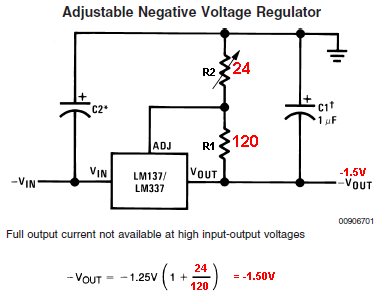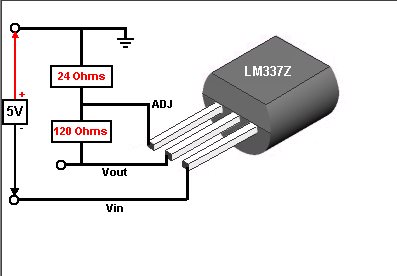Hello,
I want to regulate a -15V track to a value of -1.5V. Unless I miss-understood the component description I thought I could use the LM337 with the variable resistor R2 set to 24Ohm. The set up I have is that recommended in the revised November 2007 datasheet in Figure 1. I am unable to obtain the desired output value and have tried a different combination of voltages and resistors. From what I observe on the scope it seems to act as a voltage follower ie. no matter what my input voltage is (within the range) my Vout is always 0.5V away. Any help on understanding or alternative suggestions would be highly appreciated as I'd also like to use the LM317 to generate several positive values from a +15V rail.
Regards,
Hind



